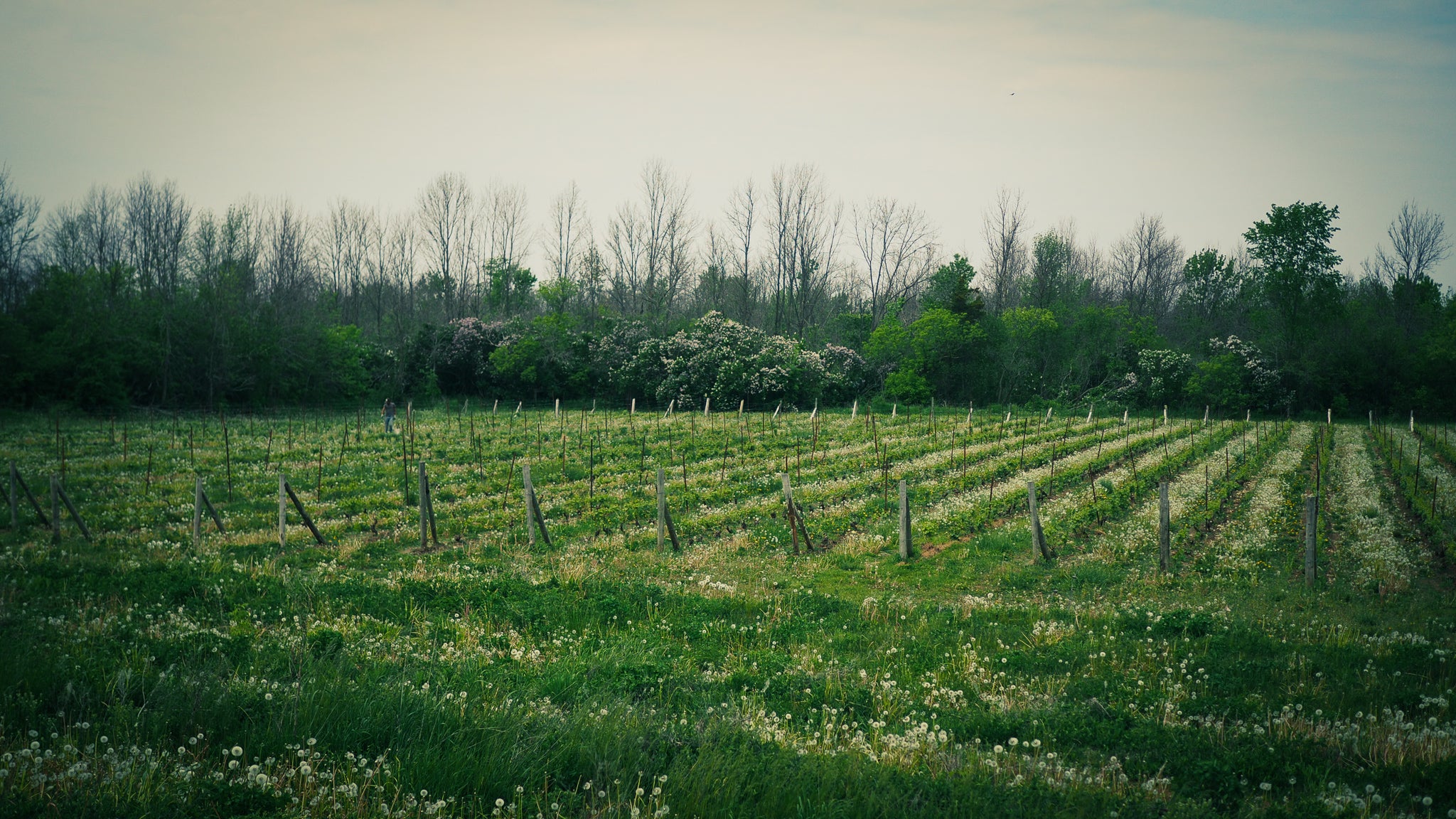There is something special about spring in Prince Edward County. After months of what feels like a sleepy hibernation the County is suddenly bursting with life, sunshine and the scent of blossoming lilacs. Once the last frost of the season passes the vines get uncovered and the team at Traynor gets ready to do it all again!
This time of year the vines grow quickly — almost an inch a day. It feels like you can drive through the County and watch the vines grow from morning to afternoon. You go to sleep and you wake up to green fields the next day. A week later, the canopy has grown fully. After anticipating the start of a new season for months, it feels like it all gets started in a blink of an eye.
We caught up with Richard to see how he is getting the vineyard ready for the season ahead.
Weeding & Replanting
When the vines start to grow, so do the weeds. Traynor doesn’t use herbicides, so it is a lot of manual work and pruning to try and keep the weeds to a minimum between the vines. This time of year it is a job that has to be done every ten days or so. It can be pretty time consuming, especially since the weeds close to the vines or poles are picked by hand to minimize any potential harm to the growing vines.
Once the vineyard is cleaned up Richard has to also think about replanting some of the vines that may have been damaged in the previous year. It will then take approximately five or so years until the replanted vines start yielding grapes that can be used for wine. Richard’s lesson on the vineyard so far? A lot of patience — you’ve got to be in it for the long haul to see the rewards.

New Buds
The vines already have buds growing on them — it happens that quickly! Although the different grapes all look pretty similar at this stage, Richard shared that if you look at the new growth on the leaves, the top leaves of Cabernet Sauvignon, Cabernet Franc and Petite Verdot all have a bit of white to them. (You can take this knowledge to your next dinner party.)
Each grape, or bud, you will find a primary, secondary and tertiary buds where the clusters grow. You can tell as early as this time of year what direction each bud is heading in — the primary buds being those where the biggest, best quality fruit come from, and where the secondary buds come out. The tertiary buds are the smaller clusters, and would be about half the amount of weight as the primary buds, and yield lower quality fruit. The tertiary buds typically don’t ripen as much, and will have less sugar and be more acidic. This is part of the grape’s survival tactic, so if the primary buds don’t make it, they have the secondary and tertiary buds to fall back on.
In terms of winemaking, we want the primary buds to thrive — these are the grape clusters that will make higher quality wine, where tertiary buds go into tables wines, or less expensive, lower quality wines. This sorting is done at harvest.
Maximizing Resources
Once you know the primary buds are in a good place some winemakers may also choose to drop the tertiary buds to make sure the resources are going to the grapes that will produce the higher quality wine. If there are too many bunches you may end up yielding lower quality grapes since the resources are being spread too thin. This is something that would happen on the vineyard around July. The team at Traynor has only had to do this a handful of times, and is really determined year to year.
Don’t worry, those grapes don’t go to waste. Although they are really acidic and don’t have a ton of sugar, the Traynor team has been trying to find a way to preserve this juice to start the Piquette — an experimental way of adding acidity back into wine, without having to use something outside of the grapes.

Suckering & Witchcraft
So, what is suckering you may ask? The team will look at the vine shoots, and if they look sick or old, they will clip them off by hand to make room for the healthier shoots to fully develop. Once the team knows the shoots are healthy, they will also look for the extra shoots that come out of the crown, which have latent buds, and remove them as well. This is another technique the grapes use to stay alive, but winemakers will remove them so that the resources go to the part of the vine they want to grow. All of these small decisions now can impact the final harvest — these practices are all very dependent on the wine region, the vineyard and the winemaker.
Richard joked; “It is a combination of really technical science, and a little bit of witchcraft.”
—
What wine are you most excited to try on Traynor’s new patio this season? Be sure to check @traynorvineyard for updates about new releases and how to book tastings this summer.












